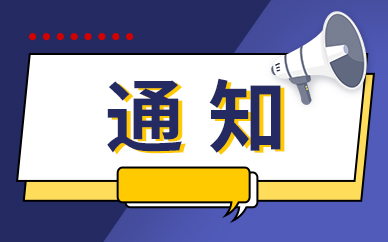Chinese Creepy Crawlies: Keeping the Pests of May at Bay
In the lunar calendar, May is known as the “month of poison” due to it being the month when temperatures rise, precipitation increases, and venomous pests start to breed. The custom of Dragon Boat Festival, which falls on the fifth day of the fifth lunar month, is to “repel the five venoms,” referring to the five types of venomous pests, which are generally considered to be snakes, scorpions, centipedes, geckos, and toads. However, since geckos are not poisonous, they are sometimes replaced by spiders in folklore representations.
 【资料图】
【资料图】
Vermin have long plagued the Chinese, who have imagined the five pests as demons or evil spirits. In the court of the Qing dynasty (1644-1912), a Peking Opera called “The Legend of the Five Venoms” told the story of these venoms being transformed into human form as a red python spirit, scorpion spirit, centipede spirit, gecko spirit, and toad spirit. These evil spirits brought chaos and disaster to the world until they were tamed by a Taoist master and peace was restored.
A still from the Qing Dynasty court play “The Legend of the Five Venoms,” a lively show with fighting scenes that is staged during Dragon Boat Festival. SUBSCRIBE TO OUR NEWSLETTERSubmitBy submitting, you agree to our Terms Of Use.*Please enter an email address.The Peking Opera “Repel Five Venoms” features intricate facial makeup combining representations of a scorpion, snake, toad, gecko, and centipede to create a hideous and malevolent appearance.Repelling the five venoms has long been an important ritual during Dragon Boat Festival. One common method is to use Chinese mugwort, as it emits a medicinal fragrance that can drive away venomous pests. In addition, many people hang Chinese mugwort on their doors to prevent venomous pests from entering. Some even braid the mugwort into human or tiger shapes for better effect. Another method is to dry the mugwort, set it on fire, and fumigate the house with its smoke before sprinkling lime powder, as they are all believed to be helpful in getting rid of pests like spiders. Along with sweet flag, Chinese mugwort can also be used in baths to prevent illnesses, while oral remedies, such as adding realgar, a type of mineral, to alcohol to create realgar wine, have been used as part of TCM to kill pests and expel poisons.
Sweet flag and Chinese mugwort, known for their ability to repel venomous pests, are put together in a vase. From “Recherches sur les superstitions en Chine,” by Henri Doré, 1910-1930s.Folktales have also incorporated the custom of repelling the five venoms into their plots. One such example is “The Legend of the White Snake,” in which a monk named Fahai tells scholar Xu Xian that his wife, Lady White Snake, is actually an evil snake spirit. At first, Xu doesn’t believe him, but the monk gives him realgar wine and instructs him to make his wife drink it during Dragon Boat Festival. Initially skeptical, Xu follows the monk’s instructions and his wife is unable to resist the power of the realgar wine. She transforms back into her original form of a thousand-year-old snake spirit with a bloody mouth and lightning-like eyes, sticking her head out from the bed. Xu is frightened to death by what he sees. Lady White Snake then risks her life to steal fairy grass to save him.
In addition to using medicinal herbs, people also wore five-colored threads to prevent contracting the plague. This tradition dates as far back as the time of Qu Yuan, a poet and politician (c. 340 BC–278 BC) who committed suicide by wading into the Miluo River in modern-day Hunan province as a form of political protest. Legend has it that people wrapped up sticky rice dumplings known as zongziand threw them into the river as an offering to Qu. Believing in the magic power of the five-colored threads, people used them to wrap up the zongzito scare off the dragons in the river and prevent them from eating the offerings given to Qu. People would also embroider patterns of the five venoms on a child’s apron or shoes, as, according to the idiom “fight poison with poison,” a child wearing such items would be able to steer clear of venomous pests.
A pair of shoes and an apron with patterns of the five venoms in Liaocheng, Shandong province, June 19, 2023. Zhang Zhenxiang/VCGCharms have traditionally been considered to yield a considerable amount of power in China. For example, people would draw the shapes of the five venomous pests on red paper, stick the paper on a wall, and then use five needles to pierce the insects one by one. This was believed to kill the pests and prevent them from making their presence felt. Another similar custom is the use of baohulu, a type of gourd. People would cut red paper into the shape of gourds and stick them on bedroom doors. Due to gourds being the talisman of celestial beings and used to trap evil spirits in ancient novels such as “The Investiture of the Gods” and “A Journey to the West,” they were believed to have the power to collect the pests’ “venomous air.”
Left: From “Recherches sur les superstitions en Chine,” by Henri Doré, 1910-1930s; Right: A paper charm from the Republic of China era, featuring a tiger surrounded by the five venomous pests. It is said that tigers have the ability to ward off evil spirits.Some families would also hang up posters of Zhong Kui, an exorcist in Chinese folktales, holding a sword and killing the five venomous pests. Folk paper charms also depicted the god of thunder attacking the five venoms. The god of thunder had an appearance that incorporated the face of a monkey and wings, and, in paper charms, he would fly from the sky on billowing black clouds, holding a hammer to incapacitate thunder and lightning, instantly killing venomous pests.
Left: A paper charm from the Qing dynasty showing Zhong Kui, an exorcist in Chinese folktales. His portrait is hung up to repel the five venoms; Right: A paper charm showing Zhong Kui fighting the five venoms and stepping on a snake. A paper charm from the Qing dynasty showing Leigong, the god of thunder, attacking the five venoms. In this picture, people are wishing for thunder and lightning to exterminate the five venoms, which have transformed into human form.The ancient Chinese custom of repelling the five venoms, which involves using medicinal herbs and charms to ward off venomous pests, is still practiced today. Even in buildings in urban areas, Chinese mugwort can be seen hanging from people’s doors, demonstrating the enduring vitality of this tradition. From a modern perspective, given that some pests do indeed carry germs and can spread disease or venom through their bites, the custom of repelling the five venoms serves as a form of health care and disease prevention that has endured through the centuries.
This festival custom, with its strong sense of ritual, has been passed down through the generations and continues to be an important part of Chinese culture to this day.
Translator: Gao Shenghan; editors: Elise Mak and Ding Yining.(In-text images: All the images are from the public domain, collected and provided by Sheng Wenqiang, unless otherwise noted.)
(Header image: A painting representing the five venoms. VCG)
关键词:









